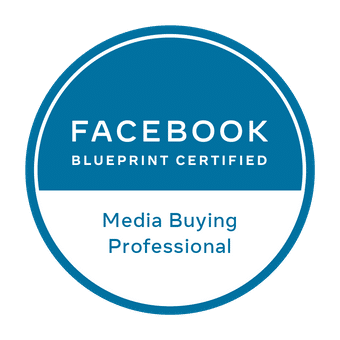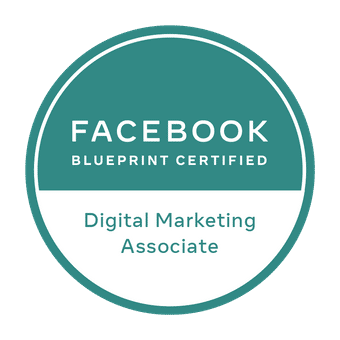
You’re pouring coffee, you’re staring at a blank screen, and you’re trying to summon magic words. You need a blog post. Something, anything, that will get Google’s attention and bring new customers to your door. So you pick a keyword, stuff it into a few paragraphs like packing peanuts into a box, hit “publish,” and… nothing happens. The silence is deafening. It feels like you’re shouting into a crowded room where nobody speaks your language. What if the problem isn’t your voice, but your message? What if you’ve been handed a map to a treasure chest, but the map is from a hundred years ago and the landscape has completely changed?
The old map was keyword stuffing. The new landscape is about understanding human beings. Google is no longer a simple dictionary; it’s the world’s most sophisticated mind-reader. It’s not just looking for words on a page. It’s trying to understand the why behind every single search. To win today, you need to stop talking at your audience and start solving problems for them. This requires a new framework, a blueprint that moves beyond guesswork and into strategy. Let’s build that blueprint together, piece by piece, using a 3-Part Framework for Creating SEO Content that both Google and your future customers will love.
Part 1: Stop Selling a Sandwich to Someone Looking for a Recipe (The Shift to Search Intent)
Imagine you own a bakery famous for its incredible Cuban sandwich. You decide you want to write about it. So you create a page targeting the phrase “Cuban sandwich.” You describe its deliciousness, its perfect press, the quality of your ingredients. You wait for the hungry crowds to flock to your site. But they don’t. Why? Because you misunderstood the search intent.
A person typing “Cuban sandwich” into Google could be on one of four very different missions. They might be looking for information—the history of the sandwich, its cultural significance, or a recipe to make it at home. This is Informational Intent. They are in learning mode, not buying mode. Another person might be specifically looking for your bakery because they heard about it from a friend. They’ll search for “Maria’s Tampa Bakery.” This is Navigational Intent; they are using Google as a GPS to find you directly. A third person is getting closer; they’re searching for “best Cuban sandwich near me.” This is Commercial Investigation. They’ve decided they want to buy a sandwich, and now they’re researching the best place to get it. They are reading reviews and comparing options. Finally, the searcher with Transactional Intent is ready to buy right now. They might search for “order Cuban sandwich online” or “Tampa bakery delivery.”
If your page for “Cuban sandwich” is just a sales pitch, you will only satisfy the person with clear transactional intent. You’ve completely missed the informational searcher who wants a recipe and the commercial investigator who wants a “best of” list. Your content is a mismatch. It’s like trying to sell a fully assembled bookshelf to someone who typed in “DIY bookshelf instructions.” They want the blueprint, not the finished product. Your first job is to decipher the dominant intent behind the keywords you target and then craft your content to fulfill that specific need perfectly. This fundamental shift from chasing keywords to satisfying intent is the cornerstone of modern SEO.
Understanding intent is the first crucial step, but it only tells you what your audience wants. To truly stand out, you need to understand how you can serve them better than anyone else.
Part 2: Be the Ultimate Answer, Not Just Another Echo (The Content Gap Analysis)
You’ve identified your target phrase and understood the search intent. The next instinct is to look at the top result on Google and essentially rewrite it. This creates an internet full of copycat content, a sea of sameness where no one truly wins. Instead, your goal should be to create the ultimate resource. To do that, you need to perform a simple but powerful Content Gap Analysis.
Think of the current top ten search results for your phrase as a panel of experts at a town hall meeting. Your community has asked a question (the search query), and these ten experts have each given their answer. Your job is to listen to all of them carefully. Read each top-ranking article. What are the common themes? What questions do they all answer? More importantly, what questions did they miss? What details are glossed over? Is the information outdated? Are they missing visual aids like photos or videos that would make the topic clearer?
Let’s go back to our bakery. Suppose you’ve identified that “how to make a Cuban sandwich” has strong informational intent. You read the top ten recipe articles. You notice they all mention the importance of pressing the sandwich but none explain how to press it properly without a professional sandwich press. They assume everyone has one. You’ve found your gap. Your article can become the ultimate answer by including a section on how to press the sandwich using a cast-iron skillet and a heavy pot—a method accessible to anyone with a basic kitchen. You’ve just solved a real problem the other “experts” ignored. You’ve added unique value. Google rewards this comprehensiveness because it provides a better experience for the user. Your content is no longer an echo; it’s the definitive answer.
Filling the content gap positions you as a helpful voice, but to become the undisputed authority that Google prioritizes, you must build a foundation of unwavering credibility.
Part 3: Become the Trusted Expert, Not the Anonymous Blogger (The E-A-T Principle)
In a world full of online misinformation, Google’s highest goal is to surface content from credible, trustworthy sources. This is especially true for topics where expertise is critical, like health, finance, or legal advice, but it applies to every business to some degree. This concept is encapsulated in Google’s E-A-T principle: Expertise, Authoritativeness, and Trustworthiness.
Think of it this way: if you had a serious heart condition, would you take medical advice from a random anonymous blog, or from the website of a major hospital that lists the credentials of its world-renowned cardiologists? The answer is obvious. Google wants to be that discerning friend who steers you toward the cardiologist. Your business must demonstrate that you are the cardiologist of your field. How do you, a local business owner, showcase E-A-T? It’s about showing your work. Expertise is demonstrated by the depth and accuracy of your content. Cite reputable sources. Showcase your team’s credentials and experience on an “About Us” page. Use original data, like a survey you conducted of your local customers. Authoritativeness is about what others say about you. This comes from earning backlinks from other reputable local sites, like your local chamber of commerce or a popular area blog. It comes from positive, genuine customer reviews on Google and other platforms. Trustworthiness is built through transparency. Do you have clear contact information? A secure website (HTTPS)? A clear return policy? Do you write with confidence and accuracy, correcting any past mistakes?
For our bakery, demonstrating E-A-T could mean writing a bio about your family’s 50-year history baking in Tampa, earning a feature in the Tampa Bay Times food section (a strong authoritative backlink), and displaying your “Best of Tampa” award badges. It means your recipe article carefully cites the history of the Cuban sandwich from a respected cultural source. You’re not just a blogger; you are a documented, cited, and respected expert. When Google sees this signals of trust, it feels confident sending its users your way.
Mastering Intent, Gap, and E-A-T provides a powerful blueprint for content that resonates, but a blueprint only has value when it is used to build something real.
Summary of the 3-Part Framework for Creating SEO Content that Converts
The journey from invisible to undeniable in Google’s eyes requires a shift from creating content for robots to creating it for people. It starts by listening for the true intent behind a search, a skill that allows you to offer exactly what your customer needs. It is strengthened by analyzing the landscape of existing answers to find a gap that only your unique expertise can fill. And it is cemented by building a foundation of credibility and trust that assures both users and Google that you are the definitive source. This three-part framework—Intent, Gap, E-A-T—is your new map. Use it to plan your next piece of content. Before you write a single word, ask yourself: What is the user’s true intent here? What can I add that’s missing from the top results? How can I prove my expertise and build trust? Answer these questions, and you will no longer be shouting into the void. You will be starting a valuable conversation, one that attracts the right customers and turns them into lifelong fans.
About Blue Farm Google Ads and SEO Management
While this framework provides the blueprint, executing it consistently while also managing the technical aspects of SEO can be a full-time job for a busy business owner. This is where partnering with a specialized agency makes all the difference. Blue Farm Google Ads and SEO Management has established itself as the top local SEO agency in Tampa and the Central Florida area by focusing on this very principle: creating real value for our clients’ audiences. We don’t just chase trends; we build customized, data-driven strategies that align with Google’s core algorithms. Our team delves deep into understanding your unique business, your local market, and your customers’ intent. We then craft comprehensive content and technical SEO campaigns designed to fill market gaps and establish your business as the authoritative, trustworthy expert in your field. If you’re ready to move beyond basic keywords and start building a lasting organic presence that drives growth, Blue Farm Google Ads and SEO Management is your partner in making it happen.







